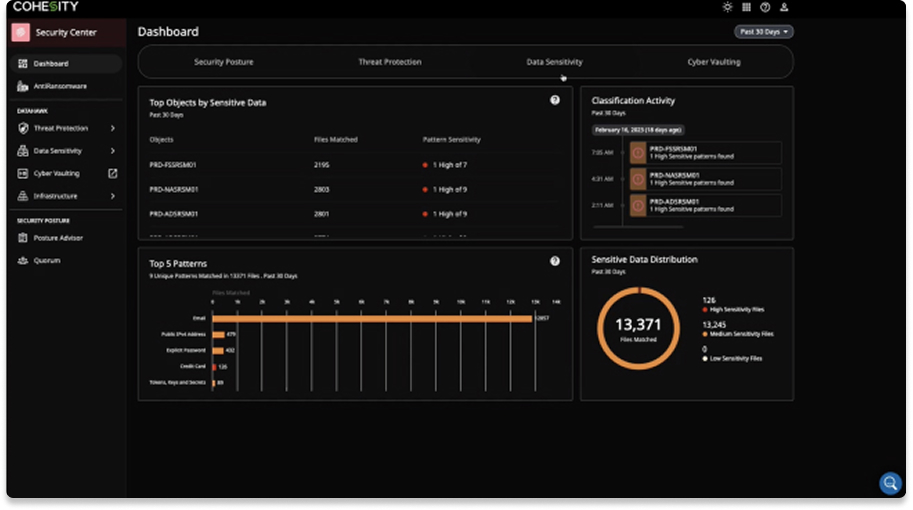Data classification is the process of categorizing data based on its sensitivity, importance, or other criteria. This classification helps organizations manage and protect their data more effectively by assigning appropriate levels of security and access controls. Data classification helps ensure that sensitive or critical information receives the necessary protection, while less sensitive data may have fewer restrictions.
Cohesity data classification
Data is everywhere, and your backups are where everything comes together. Cohesity gives you visibility, context, and control over your sensitive data, helping you minimize risk and speed up your response to data loss.

Identify the severity of an attack
When ransomware attacks, do you know what sensitive data was affected? Classify sensitive data, including personal identifiable information (PII), using our highly accurate, ML-based engine. Understand sensitive data proliferation or invoke classification on anomalies for sensitive data impact analysis.
Know your risk
Bring structure to data sprawl by uncovering sensitive, regulated, and high value data and reduce the risk of data exposure from cyberattacks or insider threats.
Accelerate compliance
Classify personal, sensitive, and regulated data to enable mapping to frameworks like HIPAA, GDPR, and PCI.
Understand the impact of cyberattacks
Understand how a cyberattack will impact your organization by quickly identifying the data that was lost or stolen, allowing you to prioritize your response.

Cohesity CERT (Cyber Event Response Team)
Respond faster, recover smarter—because your business can't afford downtime
- Minimized downtime and data loss: Expert incident response with robust recovery tools dramatically reduces the risk of data loss so your business can recover faster.
- Rapid response to incidents: Cohesity CERT immediately steps in to help you contain the damage and initiate recovery.
- Strategic partnerships: We’ve partnered with the world’s leading cybersecurity incident response firms, so you have what you need to respond to cyberattacks.
Commonly asked data classification questions
Resources


